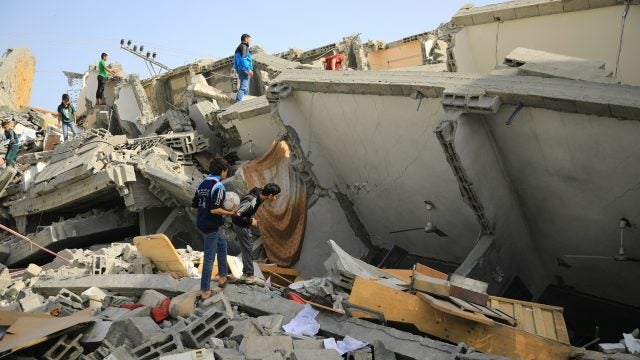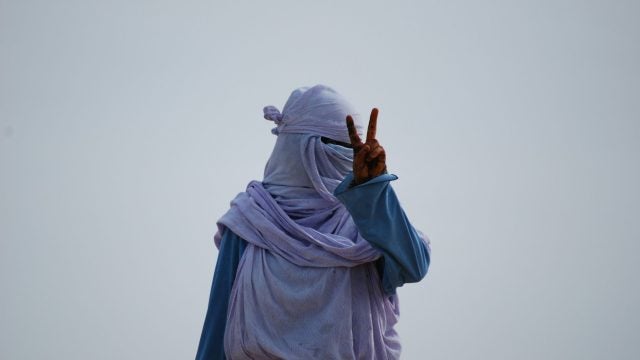Title: Cultural Rights Defenders: Strengthening Protections for Artists and Creatives
We owe cultural rights defenders a significant debt of gratitude for the work they do to defend human rights and ensure beauty, color, dignity, expression, celebration, thought, meaning and memory in our world; for the way they challenge us to think and re-think by striving for cultural rights.
Karima Bennoune, United Nations Special Rapporteur in the field of cultural rights
In January 2020 the United Nations Special Rapporteur in the field of cultural rights, Karima Bennoune, released a report devoted to the notion of “cultural rights defenders.” Her purpose: “to empower and raise the profile of an often ignored, subcategory of human rights defenders with a view to fill the gaps in the implementation of the 1998 UN Declaration on Human Rights Defenders.” By recognizing cultural rights defenders Bennoune acknowledged and amplified the work of an existing group of activists whose work, until recently, has often been overlooked.
Even though human rights defenders safeguard all categories of rights, for many years international human rights organizations have predominantly focused on civil and political rights by fighting against disappearances, torture, and impunity. It has taken longer for the international community to implement economic, social, and cultural rights and recognize their defenders, reflecting the ways that civil and political rights were separated from economic, social, and cultural rights in the two 1966 United Nations (UN) international covenants on human rights. In recent years, UN resolutions and recommendations have gradually incorporated other groups of defenders. In 2011 the UN reinforced the protection of women’s rights defenders and of environmental rights defenders in 2016. The inclusion of cultural rights defenders reflects the increasing visibility of cultural rights as interconnected with other human rights and as a means for their effective realization.
“Many people may be cultural rights defenders, or function as such, without necessarily describing themselves in those terms. These include anthropologists, archaeologists, archivists, artists, athletes, cultural heritage professionals and defenders, cultural workers, curators and museum workers, educators, historians, librarians, media producers, public space defenders, scientists, staff and directors of cultural institutions, writers, defenders of cultural diversity in accordance with international standards and those promoting intercultural understanding and dialogue.”
Karima Bennoune, Report of the Special Rapporteur in the field of cultural rights, 20 January 2020.
Bennoune highlights that many of those who defend cultural rights work outside “traditional human rights defenders’ spaces or roles.” While it can be more difficult to identify cultural rights defenders, they warrant the same attention and protection as other human rights defenders because “they are vital to the human experience and critical to implementing other human rights and to sustainable development.”
The role of the arts has been recognized in the processes of post-war reconciliation and democratic transition. This potential was acknowledged in 2018 when UNESCO initiated the program Art Lab for Human Rights and Dialogue. The program is “a laboratory of artistic interventions, which highlights the social role of artists in processes of memory and reconciliation, and, hence, in promoting human rights, dignity and artistic freedom.” Among its activities the Art Lab supports UN Field Offices, to sensitize and train cultural, development and humanitarian operators on how to plan and implement artistic interventions within post-conflict contexts. The operators are also trained to compile good practices with relevant indicators to showcase the concrete impact of the arts in the field. The 2020 report goes further to acknowledge the role of cultural rights defenders whatever the context, not only in post conflict or transition processes but in democratic countries as well. Cultural rights defenders contribute to the promotion and protection of all human rights as well as the realization of the agenda for sustainable development as an effective response to the climate emergency.
The recognition of cultural rights defenders demonstrates the major role that culture, and the arts play in promoting democratic values and upholding democratic spaces. At a time when the world is overwhelmed by flows of information and citizens struggle to distinguish the truth from fake news, culture and the arts offer alternative means of communication that speak to our senses and emotions. Bennoune has explained that “through art and cultural initiatives, people can increase social interactions necessary for mutual understanding and built or rebuilt trust. This is essential to achieving a range of human rights goals and to respecting cultural diversity.”
An important and major distinction with other human rights defenders, such as journalists or lawyers, is that artists do not necessarily offer the truth but rather a vision of the world. Moreover, the choice to have a social engagement—to be an activist or artivist—is only one possibility. To respect a person’s right not to be labeled as a human rights defender and to ensure appropriate protection even if the artists and cultural workers don’t directly defend human rights is vital. It is important to acknowledge that states and civil society organizations alike may be tempted to only protect the artists that directly deliver a human rights message or defend the right of a specific group. Bennoune elucidates this sentiment in the 2018 report: “Writers and artists may be targeted precisely because they represent the liberating gift of the human imagination and give voice to thoughts, ideas, debate and critique, disseminated to a wide audience.”
Restrictions on artistic freedom often reflect a desire to promote a certain narrative to the exclusion of others. This can be seen in the context of the COVID-19 pandemic. Bennoune‘s latest report, issued in February 2021 on COVID-19, culture and cultural rights, details examples of artists using their craft to convey public health messages but also of artists questioning the way authorities are using emergency powers to manage the crisis. The report mentions for instance the case of the collective Delight Lab in Chile who projected the word “hambre” (hunger) on a public building in the capital Santiago on the same day as the protests against the socioeconomic impacts of lockdowns. Both groups of artists should be protected if and when they come under threat. Both contribute to debate in a democratic society.
Protection schemes that have been established both by states and civil society actors also become available to cultural rights defenders following their recognition as part of the broader human rights movement. These protection schemes can offer security to artists. Colombia, for instance, adopted a decree in 2011 that created a Protection Unit for human rights defenders. This unit provides various services which include preventive measures (such as self-protection courses) to physical protection (armored cars, bodyguards, bullet-proof jackets) or three months temporary relocation (including transportation costs).
Recognition as cultural rights defenders opens the possibility for artists and cultural workers to benefit from diplomatic protection and support at the state level. In Europe for instance, the 2008 guidelines encourage diplomats in European Union (EU) missions to meet regularly with human rights defenders, visit detained activists, monitor their trials and advocate for their protection. In cases of emergency, visas can be issued and temporary shelter for human rights defenders provided by EU member states. Civil society organizations aware of these protections can request the intervention of EU delegations for the benefit of artists now recognized as cultural rights defenders. Additionally, this recognition can provide access to grants and financial support that have been specifically designed for human rights defenders including protection measures and temporary international relocation programs.
Bennoune has made repeated calls for the creation of an active coalition of organizations working on cultural rights that would coordinate their efforts to protect artistic freedom. This coalition would be the key to implementing the standards she calls for in the recommendations of the 2020 report. Human rights standards should include arts and cultural institutions as well as human rights organizations to ensure that public authorities grant ‘creatives’ adequate protection in accordance with the role they play in opening and maintaining democratic spaces. The recognition and protection of cultural rights defenders brings a new opportunity for these organizations to find common ground and start building alliances and strategies for the better protection of artists and creatives.
…
Laurence Cuny is a human rights lawyer and researcher at UNESCO Chair on the diversity of cultural expressions, Laval Faculty of Law, Québec. Cuny is the author of “Freedom & Creativity: defending art, defending diversity,” published by UNESCO in 2020 and “Relocating Artists at Risk in Latin America” published by the German Institute for Foreign Relations in 2021.
More News

This piece examines the UK government’s proscription of Palestine Action under the Terrorism Act, situating it within a broader trend of shrinking space for public dissent. It argues that the…

This article analyses the distortions of the International Humanitarian Law (IHL) notion of proportionality in the context of the Israel-Gaza war. It discusses Israel’s attempts to reinterpret proportionality to justify…

The escalating women’s rights crisis in Afghanistan demonstrates a gap in international legal protections of the rights of women and girls. The international community should fill this gap by making…